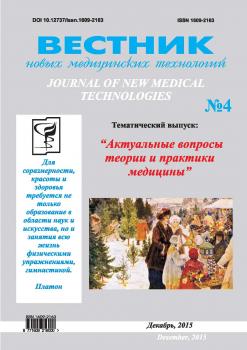This article is a continuation of a series of works on creation of ion-molecular memory model. Structural elements of the library of memory, as well as their rather complex interaction are considered. The authors are talking about the library in anatomically formed brain. It is believed that information is stored in certain structural elements ("repository of facts"). The concept of directory information and a buffer of information systems and their capacity were introduced. The scheme of possible structure of the library of memory that includes inputs, controllers, switches, transmitters, receivers-directories, drives, and concurrently-cascaded (specialized) of the auxiliary sections of the library memory was proposed and substantiated by the authors. Structural elements of the storage of information already exist in anatomically formed brain, and actually library memory has elements of different physical sizes. Information is also distributed by the authorities, and the smallest unit patterns library memory is one where the only fact is stored. As soon hydrogen ions as carriers of information, easily contact the buffer systems, this indicates that in the system memory other structures to store facts – information are excessive, with the exception of physical and chemical buffers of protein nature. It is also clear: if more capacity information in the buffer, the more information can be stored in it. Structural elements of the library memory can be presented in sufficient functional completeness by controllers, switches, transmitters and drives. It is not excluded that controllers and switches are located within a single molecular (submolecular) structure.
library memory, structural elements, interaction of elements libraries, library catalogues memory, "store of facts”, information buffer, structure of the library.
1. Gerasimov I.G., Yashin A.A. Ionno-molekulyarnaya model´ pamyati. Vvedenie. Osnovnye opredeleniya. Vidy pamyati (kratkiy obzor). Vestnik novykh meditsinskikh tekhnologiy. 2013. T. 20. № 4. C. 165-171.
2. Gerasimov I.G., Yashin A.A. Ionno-molekulyarnaya model´ pamyati. Material´nye nositeli dostavki i khraneniya informatsii. Vestnik novykh meditsinskikh tekhnologiy. 2013. T. 20. № 4. C. 171-176.
3. Gerasimov I.G., Yashin A.A. Ionno-molekulyarnaya model´ pamyati. Sposoby kodirovaniya (formalizatsii) i perenosa informatsii. Vestnik novykh meditsinskikh tekhnologiy. 2014. T. 21. № 1. C. 100-104.
4. Gardiner K., Davisson M.T., Crnic L.S. Building pro-tein interaction maps for Down´s syndrome. Brief Funct Genomic Proteomic. 2004. V. 3. № 2. P. 142-156.
5. Miller R.R., Kasprow W.J., Schachtman T.R. Retrieval variability: sources and consequences. Am. J. Psychol. 1986. V. 99. № 2. P. 145-218.
6. Agadzhanyan N.A., Tel´ L.Z., Tsirkin V.I., Chesnoko-va S.A. Fiziologiya cheloveka. S-Pb: Sotis, 1998. 527 s.
7. Mikhaylov V.V. Osnovy patologicheskoy fiziolo-gii. M.: Meditsina, 2001. 704 s.
8. Normal´naya fiziologiya / Pod red. K.V. Sudakova. M.: Med. inform. agentstvo, 1999. 717 s.
9. Obshchaya patologiya / Pod red. N.P. Chesnokovoy. M.: Akademiya, 2006. 336 s.
10. Uest Dzh. Fiziologiya dykhaniya. M.: Mir, 1988. 200 s.
11. Altgassen M., Phillips L., Kopp U., Kliegel M. Role of working memory components in planning performance of individuals with Parkinson´s disease. Neuropsychol. 2007. V. 45. № 10. P. 2393-2397.
12. Baddeley A.D. Is working memory still working?. Am Psychol. 2001. V. 56. № 11. P. 851-864.
13. Baddeley A.D. The episodic buffer: a new compo-nent of working memory?. Trends Cogn. Sci. 2000. V. 4. № 11. P. 417-423.
14. Baddeley A.D., Hitch G.J. Development of working memory: should the Pascual-Leone and the Baddeley and Hitch models be merged?. J. Exp. Child. Psychol. 2000. V. 77. № 2. P. 128-137.
15. Osaka N., Osaka M., Kondo H., Morishita M., Fu-kuyama H., Shibasaki H. The neural basis of executive function in working memory: an fMRI study based on individual differences. Neuroimage. 2004. V. 21. № 2. P. 623-631.
16. Janculjak D., Mubrin Z., Brzovic Z., Brinar V., Barac B., Palic J., Spilich G. Changes in short-term memory processes in patients with multiple sclerosis. Eur. J. Neurol. 1999. V. 6. № 6. P. 663-668.
17. Feredoes E., Postle B.R. Localization of load sensitivity of working memory storage: quantitatively and qualitatively discrepant results yielded by single-subject and group-averaged approaches to fMRI group analysis. Neuroimage. 2007. V. 35. № 2. P. 881-903.
18. Scharnowski F., Hermens F., Kammer T., Ogmen H., Herzog M.H. Feature fusion reveals slow and fast visual memories. J. Cogn. Neurosci. 2007. V. 19. № 4. P. 632-641.
19. Delyakur Zh. Mozg i razum. K.: Fakt, 1999. 96 s.





